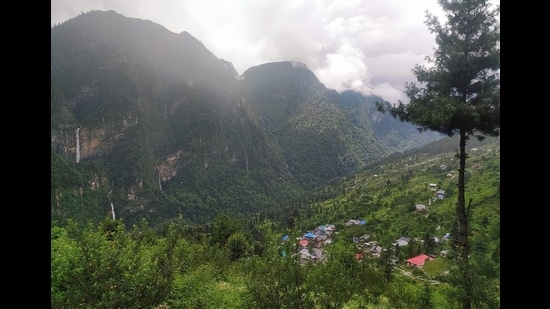Atomic Ministerial Directorate finds three uranium sites in Himachal
Kasha–Kaladi is the richest uranium belt in Himachal Pradesh with an estimated 200 tonnes of triuranium octoxide, which is enough to produce 170 tonnes of uranium
Mountainous regions and the low-lying plains of Himachal Pradesh are rich in Uranium--a heavy metal that has been used as an abundant source of concentrated energy.

Atomic Ministerial Directorate for Exploration and Research (AMD), a constituent unit of Department of Atomic Energy (DAE), has recently identified the surface uranium deposits at Masanwal in Hamirpur district.
This information was shared by the minister of state, personnel, public grievances and pensions and Prime Minister’s Office Dr Jitendra Singh in reply to Rajya Sabha Member Sikander Kumar’s query. He wanted to know details about Uranium rich sites discovered recently, especially in Hamirpur and Una. Kumar had also sought information on whether plans were afoot to set up a uranium treatment plant in Himachal. The Centre denied that it had any plans to set up any such plant in Himachal, it was informed.
AMD has found uranium deposits at Rajpura in Una district, Kasha-Kaladi in Shimla district, and Tileli in the Mandi district of Himachal Pradesh, he further shared. M DOE informed the Rajya Sabha member that to date, a total of 784 tonnes of uranium oxide resource has been estimated in these deposits, including 364 tonnes at Rajpura; 200 tonnes at Kasha-Kaladi and 220 tonnes of in-situ uranium oxide at Tileli. Earlier, uranium extracts were found during digging operations at Lambehra village in Hamirpur district.
Uranium in remote Kashapath is still untapped
Uranium mineralisation has been detected at Kasha in Nogli valley, the southeastern part of the Rampur subdivision of Shimla district. Kashapath in Rampur Bushehr is a landlocked unexplored valley. Kasha and Paath are two villages located in Rampur tehsil of Shimla district. They are located 155 kilometres to the east of the district headquarters in Shimla. The area between Kashapath and Darkrai is rich in minerals and uranium but due to the non-availability of roads, the uranium mines are still untapped, officials of mineral department said. A few years back, the Central government with the help of the state government had taken the initiative to extricate the uranium but the effort failed due to lack of transportation facilities, they added. The mineral deposit is hosted by a rock that is highly sheared gneiss with bands of schists and phyllite. Sericite, ilmenite, rutile, sphene, apatite, zircon and tourmaline occur as accessories. Kasha–Kaladi is the richest uranium belt in Himachal Pradesh, an estimated 200 tonnes of triuranium octoxide, which is enough to produce 170 Tonnes of uranium, officials of the mineral department said.
Mineralisation indicates a wide range of remobilisation from the surrounding gritty quartzite and metabolic rocks, known for higher concentrations of uranium. Besides, an anomalous radioactivity value is observed near Ropa village in the Kinnaur district. Small deposits of uranium have also been found in Batal while it has been traced in Wangtu close to the strategic national highway connecting the last border point Kaurik in the Kinnaur district
Himachal is tenth among eleven states
The size of land containing uranium in Himachal Pradesh has put the state at 10th position among the 11 states where Uranium has been traced. Andhra Pradesh, Jharkhand and Meghalaya occupy the top three positions.
Kullu district has high concentration of Uranium
Kullu district, which is famous for its beauty, is rich in uranium deposits. The uranium in the district has been traced to nine sites that comprise a huge tract of land. Chanjra and Dhara Kanola regions in the Parbati Valley have rich deposits of uranium. Others include Sajwar-Shakinandhar range, Hirub Giagai-Khalahandi in Kullu Banjar Valley Dharagardh, Nadhara, Kundli, Panihar in Tirthan Valley and Bhatrang in the Pinrang Valley if Kullu district.






